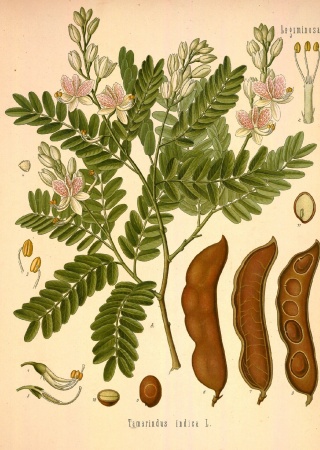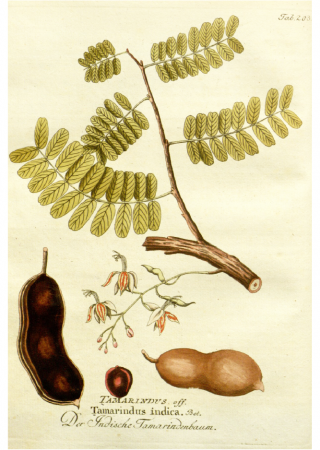Tamarind
- …tamarind has a characteristic sour, fruity taste and a pleasant aroma?
- …tamarind was carried by sailors on long journeys for its vitamin C content, as a preventative against scurvy?
- …tamarind is an essential ingredient in Worcestershire sauce?
- …the Arabian words tamr hindi mean something like "Indian dates"?
- …in the Caribbean, tamarind pulp, sugar and water are used to make a refreshing lemonade?
- …Tamarindus indica trees that can grow up to 20 meters?
- …people in India, where tamarind grows, can predict the weather based on how its leaves are positioned?
- …Asian cooks often put tofu into tamarind syrup, which gives this neutral soy product a pleasant taste?
- …tamarind as a spice is a paste or bits of fruit pulp from the Tamarindus indica tree?
Rice with lentils and tamarind, a favorite Nepalese food (Dál bhat)
0,75 l water
200 g fresh lentils
1 tablespoon fresh ground ginger
1 tablespoon sugar
1 teaspoon sliced green peppers (chili)
½ teaspoon mustard seeds
½ teaspoon five-spice mix (cinnamon, coriander, bay leaf, badian and anise)
Several tamarind beans or paste
500 g rice
salt, oil, fresh coriander leaves
Pour lentils into boiling water and cook until tender. Meanwhile, set rice to cook. To lentils, add ginger, sliced peppers, salt, sugar and tamarind pulp, mix and simmer briefly. Roast mustard seeds in oil, and when they start to pop, add to lentils, mix in five-spice blend, cover and stand briefly, to allow flavors to mingle. Serve with rice garnished with coriander leaves.
Tamarind probably comes from Ethiopia, via India. In India it has been cultivated for ages and in the 15th century, it arrived in Europe. Spanish conquistadors brought it to Central America in the 16th century, and since then, it has remained a cooking staple in islands of the south American continent. Today it is cultivated all over the world, although generally in small amounts.




